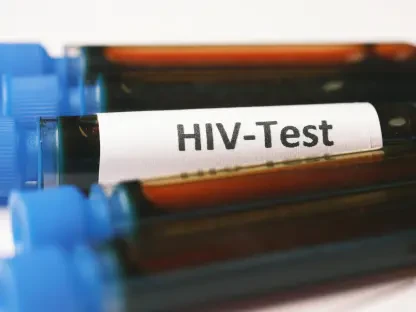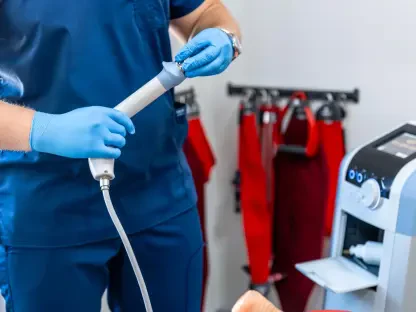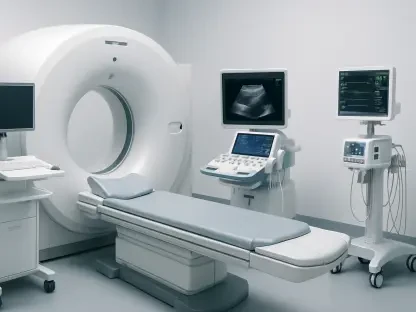Imagine a world where a life-saving medical device, designed to treat a debilitating condition, is fast-tracked for approval but remains out of reach for many seniors due to coverage limitations. This scenario is a reality for numerous patients under the current U.S. Food and Drug Administration (FDA) Breakthrough Device Designation program, a system meant to accelerate innovation but mired in debates over Medicare access. With over 1,100 devices designated since the program’s inception, the stakes are high for patients, industry leaders, and policymakers alike. This roundup gathers diverse opinions, insights, and analyses from various stakeholders to explore the tension between rapid innovation and patient safety, aiming to shed light on how this critical issue impacts healthcare today.
Understanding the FDA Breakthrough Program: Diverse Views on Its Purpose
The FDA Breakthrough Device Designation program, launched to expedite the development and review of medical devices for life-threatening or debilitating conditions, has been a focal point of discussion across the healthcare spectrum. Industry advocates often praise the initiative for its role in pushing forward cutting-edge solutions, particularly in fields like cardiovascular care and neurology. They point to the sheer volume of designations—136 already awarded in the current fiscal year starting in October—as proof of a vibrant pipeline of innovation that could transform patient outcomes if barriers are lowered.
On the other hand, regulatory experts and patient safety groups express a more cautious stance, emphasizing the need for robust evidence before widespread adoption. Many argue that while the program’s intent to speed up access is commendable, the risk of approving devices with limited clinical data remains a significant concern, especially for vulnerable populations like seniors. This divide in perspective sets the stage for a broader conversation about balancing urgency with oversight, a theme echoed in numerous policy forums and industry panels.
Medicare Coverage Limits: A Clash of Opinions
Industry Push for Expanded Access
Device manufacturers and trade associations have been vocal in their call for broader Medicare coverage of breakthrough devices, currently capped at just five per year for national coverage shortly after FDA authorization. They contend that this restriction stifles the potential of transformative technologies, leaving many patients without access to tools that could drastically improve their quality of life. Supporters highlight the momentum of recent years, with 165 designations in the last fiscal year alone, as evidence that a larger coverage framework is necessary to keep pace with innovation.
Contrasting this view, some healthcare economists argue that expanding coverage without stringent criteria could strain Medicare’s budget and lead to reimbursing treatments that may not deliver long-term benefits. They suggest that the focus should be on selective coverage tied to post-market data collection, ensuring that only devices with proven efficacy receive widespread support. This ongoing tug-of-war between access and fiscal responsibility continues to dominate discussions at industry conferences and regulatory hearings.
Regulatory Caution and Policy Rollbacks
Regulatory bodies and some consumer advocacy groups often underscore the importance of maintaining strict evidence thresholds for Medicare coverage. Concerns center on the potential risks of premature access to devices that lack comprehensive long-term safety data, a worry amplified by the repeal of a previous policy that offered near-automatic four-year coverage for breakthrough devices. Many in this camp believe that the current administration’s decision to roll back such rules reflects a necessary pivot toward protecting patient welfare over unchecked innovation.
Meanwhile, policy analysts note that this cautious approach has sparked frustration among device developers, who argue it creates uncertainty and delays patient access to critical tools. Some suggest that a middle ground—perhaps temporary coverage with mandatory follow-up studies—could address both safety concerns and the need for speed. This spectrum of opinions reveals a complex landscape where no single solution has garnered universal support, as evidenced by ongoing debates in legislative circles.
Real-World Examples: Stakeholder Reactions to Breakthrough Devices
Case Studies Sparking Debate
Specific examples of breakthrough devices often serve as lightning rods for discussion among healthcare professionals and patient groups. Take PearlMatrix, a bone graft for lumbar fusion procedures, which gained FDA approval after a rigorous 293-person trial. Industry voices celebrate this as a model of how robust data can coexist with expedited approval, advocating for Medicare to cover such innovations swiftly to benefit patients with severe spinal conditions.
Conversely, some clinical researchers caution that even well-designed trials may not capture long-term risks, urging policymakers to prioritize extended monitoring over immediate coverage. They point to the broader trend of using diverse evidence, such as real-world data, as seen in the clearance of Intuitive Surgical’s X and Xi robots for tracheal procedures. While innovative, this reliance on non-traditional data sources raises questions about consistency in safety assessments, fueling calls for clearer regulatory guidelines.
Patient and Provider Perspectives
Patients and healthcare providers bring a unique lens to this debate, often focusing on the tangible impact of delayed access versus potential risks. Many patient advocacy groups express frustration over coverage limits, sharing stories of individuals who could benefit from breakthrough devices but face financial barriers under the current Medicare framework. Their narratives, frequently highlighted in community forums, underscore a pressing need for policy reform to prioritize equitable access.
Providers, however, appear split on the issue, with some embracing the potential of new technologies to revolutionize care, while others worry about integrating unproven devices into clinical practice. Discussions at medical symposiums often reveal a desire for structured pilot programs that allow limited use of breakthrough tools while gathering further evidence. This nuanced feedback from the front lines of healthcare adds depth to the broader policy conversation, emphasizing the human element at stake.
Evolving Trends and Global Influences: A Spectrum of Insights
Innovation Focus in Key Medical Fields
The FDA’s increasing designations in critical areas like orthopedics and neurology have drawn varied reactions from industry observers and academic researchers. Many in the tech sector view this trend as a positive signal of the agency’s commitment to addressing unmet medical needs, suggesting that Medicare policies should adapt to support these priority areas. They argue that fostering innovation in such fields could position the U.S. as a global leader in medical technology.
Academic analyses, however, often highlight potential downsides, such as regional disparities in access to these advanced tools, particularly in under-resourced healthcare systems. Some studies presented at recent conferences suggest that without targeted policies, rural and low-income patients may miss out on benefits, even if coverage expands. This concern prompts a reevaluation of how innovation is distributed across diverse populations, a topic gaining traction in policy roundtables.
Global Competition and Domestic Policy
Global competition in medical technology also shapes opinions on the Breakthrough Device program, with industry leaders warning that restrictive Medicare policies could hinder U.S. competitiveness. They point to other nations adopting more flexible reimbursement models, arguing that aligning coverage with innovation could attract investment and talent domestically. This perspective often surfaces in economic forums, where the focus is on long-term strategic gains.
In contrast, some policy experts caution against prioritizing global standing over patient safety, advocating for a uniquely American approach that balances speed with rigorous standards. They note that international models may not account for the specific needs of the U.S. healthcare system, particularly for seniors under Medicare. These differing viewpoints illustrate the complexity of aligning domestic policy with global trends, a challenge frequently debated in regulatory workshops.
Charting the Path Forward: Collective Takeaways
Reflecting on this roundup, the discussions around the FDA Breakthrough Device program and Medicare coverage reveal a multifaceted issue marked by passion and pragmatism. Stakeholders across industry, regulatory, and patient communities grapple with the promise of over 1,100 designated devices against the backdrop of safety and access concerns. The stark contrast between calls for expanded coverage and demands for stricter evidence thresholds underscores a shared goal—improving patient outcomes—despite divergent paths to achieve it.
Looking ahead, actionable steps emerge from these varied insights, such as exploring hybrid coverage models that pair limited early access with mandatory post-market studies to monitor safety. Another consideration is fostering dialogue between device makers and regulators to develop clear, consistent criteria for reimbursement. These solutions, alongside continued advocacy for equitable distribution of innovative tools, offer a roadmap for stakeholders to navigate this complex terrain, ensuring that the transformative potential of breakthrough devices is realized without compromising trust or care quality.









